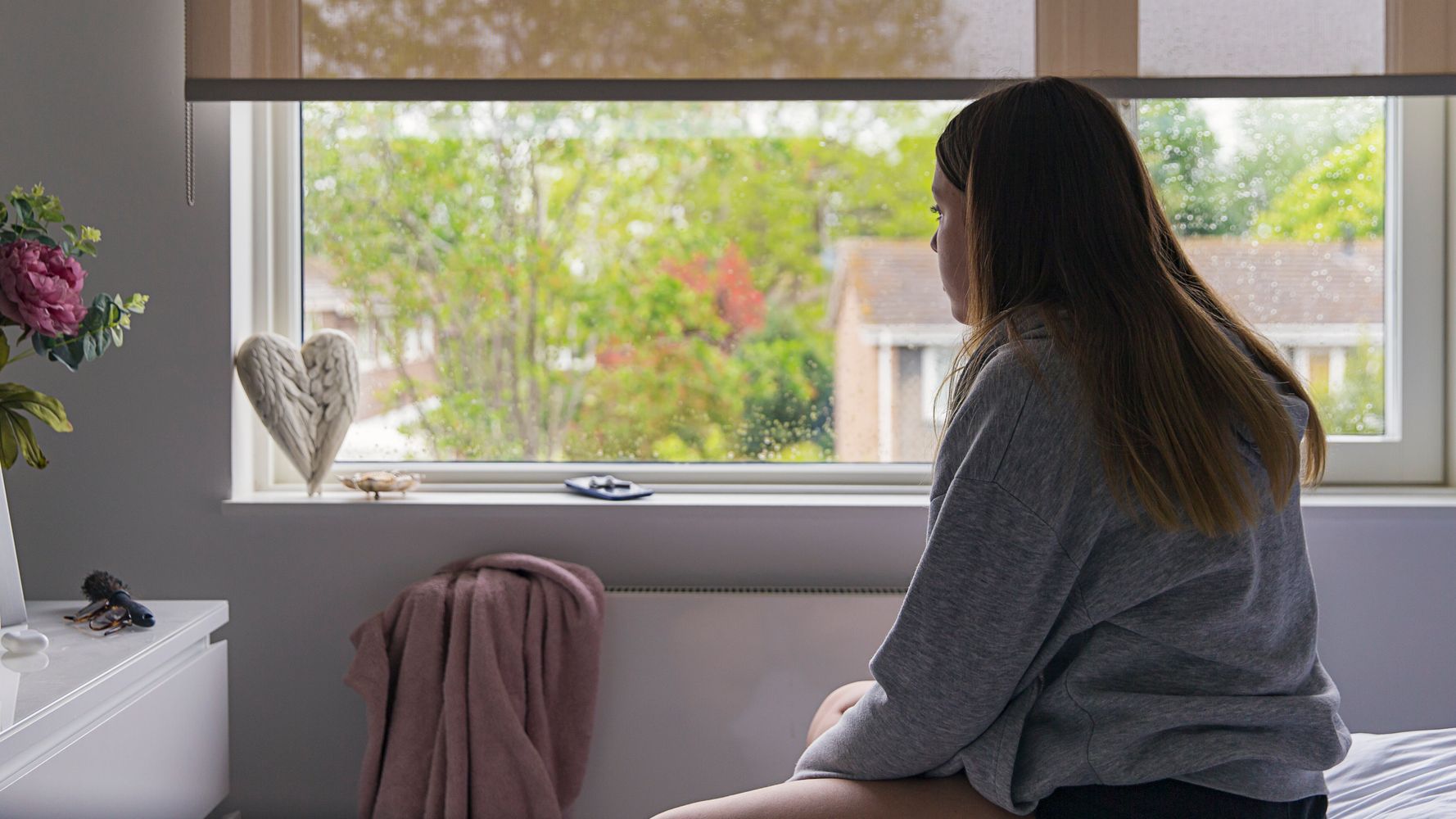The past couple of years have not been good for many kids’ mental health, but new data offers some devastating insight into the toll.
On Monday, Mental Health America released an analysis of 5.4 million online mental health screenings people took through the organization’s website in 2021. According to the report, 45% of individuals who took a screening were ages 11 to 17, marking a 16% increase since 2019.
Rates of suicidal ideation were also the highest among young people, especially LGBTQ+ youth. Overall, 51% of depression screeners in the 11-to-17 age range reported frequent suicidal ideation on more than half or nearly every day of the previous two weeks. That number rose to 52% for young people of color and 63% for youth who identified as LGBTQ+.
What do these numbers mean?
“We want to draw attention to these numbers because it’s reaching a crisis point,” Maddy Reinert, senior director population health at Mental Health America, told HuffPost. “The sheer number of people under age 18 who are struggling with their mental health and looking for resources and supports online is higher than ever before.”
She also noted that 9 in 10 young people ages 11 to 17 who screened themselves for depression on the website scored with symptoms of moderate to severe depression ― a higher rate than any other age group.
Mental Health America’s data was collected from its online screening program, which began in 2014 and consists of 10 free, anonymous, confidential and clinically-validated tools on the organization’s website. It’s important to note that the population taking these screeners are people seeking mental health help and resources, so they are more likely to test positive for these symptoms than the average individual.
Still, Reinert believes the data ― particularly the uptick in young users seeking out these resources ― underscores the extent of the mental health crisis affecting American youth today.
“Of course, we know that COVID-19 has really affected mental health, not only making us worry about our health and the health of our loved ones but also drastically changing our social environments,” she said. “About 70% of our 11-to-17-year-olds reported that loneliness or social isolation was contributing to their mental health problems. And we’ve seen a lot more youth express concerns with financial insecurity, showing the impact of COVID-19 and job loss.”
Justin Paget via Getty Images
In addition to social isolation, health concerns and financial insecurity, Reinert noted that young people have also reported experiencing grief after losing a loved one or losing major life opportunities, like going to school or certain big events. More than 200,000 children under 18 in the U.S. have lost a parent or caregiver to COVID-19, with nonwhite children losing caregiving adults at higher rates.
For some LGBTQ+ youth, there are issues stemming from being stuck at home in a household that isn’t necessarily accepting of their identity. Feeling removed from schools, communities or other places where they felt more accepted or perhaps had access to trusted adults could also be a factor. And for people of color, there are rising reports of racism, as well as fear amid increasingly visible accounts of race-based violence in the U.S.
“The situation is urgent,” Reinert said. “Maybe people assume, ‘Oh well it’s because of COVID, and once that starts to go away, things will get better and rates will go down.’ But we’re seeing a massive mental health impact that’s going to continue if we don’t act now. This problem isn’t going away. We were approaching crisis state before the pandemic, and the pandemic put a giant magnifying glass over a problem that was already there.”
What can be done to improve kids’ mental health?
“We should be screening all young people for mental health conditions the same way we screen their hearing and eyesight,” said Schroeder Stribling, the president and CEO of Mental Health America. “We should also be promoting positive social engagement and encouraging healthy coping strategies for stress and negative emotions ― especially as they emerge from a long period of social isolation and disruption in their daily lives.”
She emphasized the importance of prevention, early identification and intervention in mental health care. For young people, that means having access to equitable, affordable, compassionate and nonjudgmental support and resources in their communities and schools ― whether it’s through counselors, psychologists or even just trusted adults.
“Parents have a simple but vital role and that is to listen and be supportive,” Stribling added. “If your child feels they may be struggling with a mental health condition, believe them, validate how they are feeling and offer help in getting them support. We hear disappointing stories of young people that are suffering but do not feel believed or supported by a parent or caregiver ― and conversely, we know that a supportive caregiver can make all the difference in helping youth through crisis and into recovery and well-being.”
Ensuring that all crisis and preventative mental health services for youths are meaningfully covered by public and private health insurance is also crucial, as this is not currently the case.
“Social media is a piece of the puzzle as well,” Stribling added. “We need to take a hard look at social media platforms and find ways to minimize content that is damaging to youth mental health.”
While social media can be beneficial in providing online community to those who feel isolated where they live, its negative impact on young people has also been well documented. Creating a more mentally healthy experience for young users is crucial.
Young people should be mindful of the impact social media can have on their mental health. If they feel they are experiencing symptoms of a mental health condition, they can take an online screening to start.
“The next step is to share the results of that screening with a parent, teacher, physician, school counselor or other trusted adult to begin a conversation about getting support,” Stribling said.
If a young person doesn’t feel ready to have that conversation, they can seek out resources on Mental Health America’s website and other trusted sites like The Trevor Project, The Jed Foundation and Minding Your Mind to learn more information and find support in other ways.
“Young people can also become advocates in their schools and communities,” Stribling said. “We work with a number of youth who are leading the charge to get more accessible mental health supports and services in their areas. There are no voices more powerful than youth themselves, and we encourage young people to get involved with mental health advocacy.”


